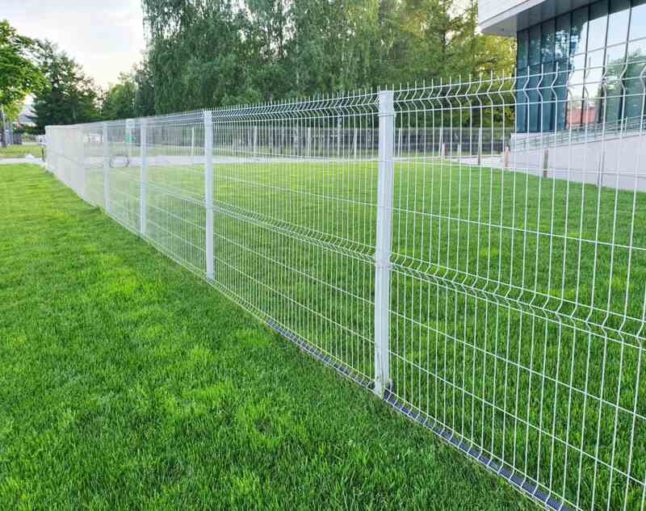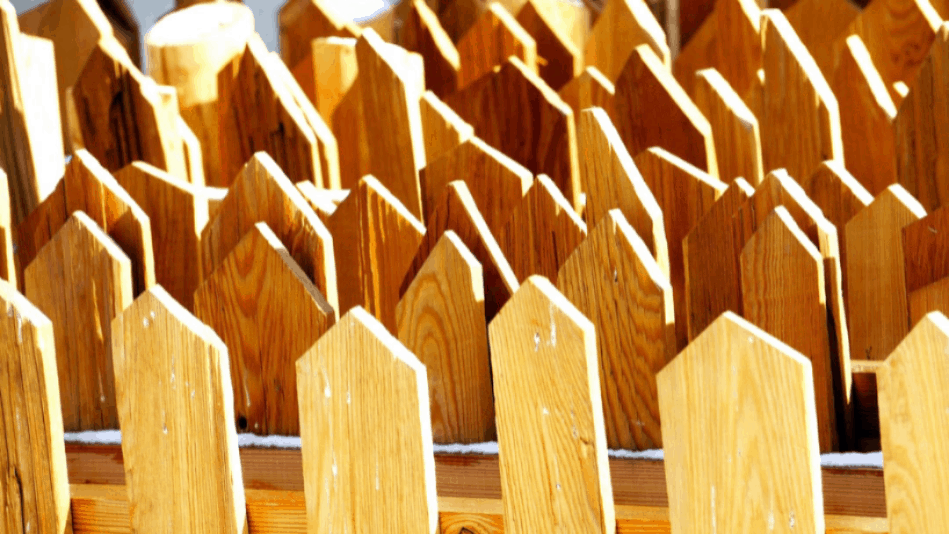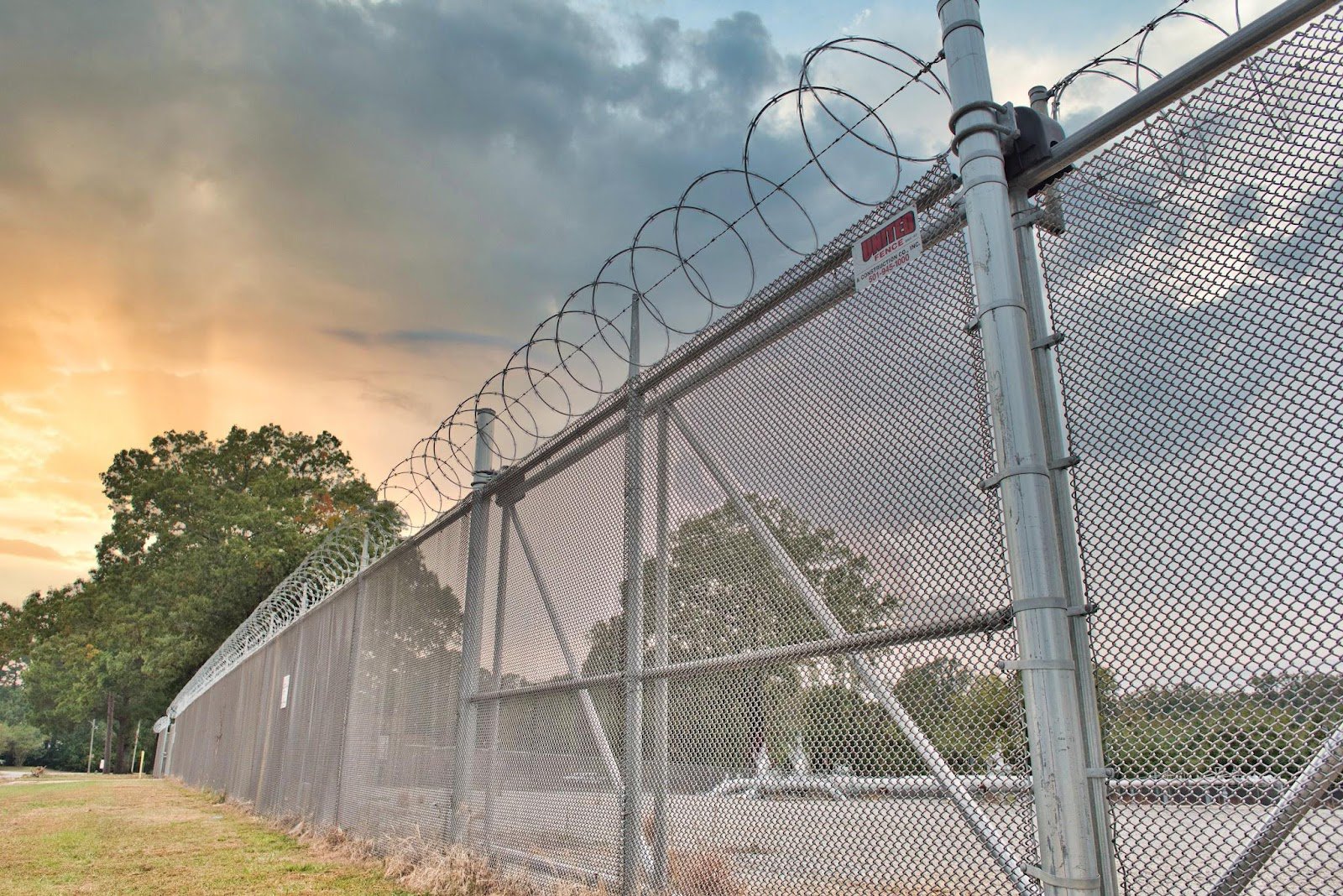All Categories
Featured
From hefty rainfall and snow to extreme sunlight and wind, weather-related damage is one of the most common reasons of fencing degeneration. While you can not manage the climate, there are several methods to secure your fence from the destructive effects of weather condition and guarantee it lasts for years to come.
Wooden Fencings: While wood fences are a classic selection, they are highly vulnerable to moisture and bugs. To make a wood fencing much more sturdy, opt for pressure-treated lumber, cedar, or redwood. These products are a lot more resistant to rot and insects. Nonetheless, you'll still need to shield the wood from the elements with normal maintenance.
Vinyl Fences: Vinyl fences are extremely long lasting and call for little maintenance. They are resistant to fading, breaking, and bending, making them perfect for regions that experience severe sunlight, rain, or cool weather. Vinyl additionally won't rot or bring in bugs, supplying long-lasting security without the need for constant upkeep.
Metal Fences: Wrought iron and light weight aluminum fencings are exceptional choices for their strength and resistance to wind and dampness. Nonetheless, they are vulnerable to rusting with time, specifically if subjected to regular rains or humidity. Decide for powder-coated or galvanized metal fences to minimize the risk of corrosion.
![]()
Composite Fences: Combining wood fibers and plastic, composite fences are immune to deteriorating, fading, and insect damages. They offer the appearance of timber with less upkeep, making them an ideal option for locations with variable climate problems.
![]()
Wooden Fences: A good high quality wood sealant or discolor is necessary to safeguard your fencing from the components. Timber sealants block moisture and shield versus mold and mold growth. They additionally protect against UV damage that can create fading and fracturing. Make certain to reapply the finishing every number of years to maintain your surround top condition.
Plastic Fences: While plastic is low-maintenance, you can still protect it better by applying a UV protectant. These finishings help protect against discoloration triggered by prolonged sunlight exposure. Additionally, make use of vinyl-specific cleaners to maintain the surface devoid of spots or dirt accumulation.
Steel Fences: To shield steel fencings from corrosion and corrosion, take into consideration applying a rust-inhibiting guide adhered to by a protective paint created for outdoor usage. Powder layer gives a long lasting and durable surface that can withstand extreme weather condition. if possible.
Wood Fencings: Clean your wood fencing with a stress washing machine or a soft towel and mild detergent. Evaluate the fencing on a regular basis for signs of rot, splits, or insect invasions.
Vinyl Fences: Plastic fences are very easy to clean with soap and water. For tougher discolorations, you can make use of a mild bleach solution or a vinyl cleaner to recover the fence's appearance. Don't neglect to evaluate for any type of splits that may allow water in, causing further damages.
Steel Fencings: Tidy steel fences with a soft fabric to get rid of dirt, corrosion, and dirt. If you notice corrosion spots, eliminate them promptly with a cord brush and treat the location with a rust-resistant primer or paint to avoid it from spreading.
Wood Fences: When setting up wooden fence posts, ensure they are set deeply into the ground, preferably listed below the frost line to stop shifting throughout freezing temperatures. Use concrete to secure the blog posts and stop them from being or leaning rooted out by solid winds.
Steel Fencings: For steel fencings, make sure that the articles are securely anchored in concrete. This is specifically important in areas with hefty winds or regular tornados. You may also wish to mount additional bracing to give additional assistance against wind anxiety.
In addition, too much moisture from nearby plants can result in mold and rot in wooden fencings, so keep plant life at a secure range to enable correct air flow and water drainage.
Metal fencings should be checked for corrosion prior to the winter begins, and any affected areas must be treated with rust-resistant products. Furthermore, applying a layer of paint or protective finishing before the chilly weather collections in can help protect your fence from ice and snow damages.
![]()
Verdict. Securing your fencing from weather-related damages calls for a mix of proper product selection, normal upkeep, and aggressive care. Whether you have a wood, plastic, steel, or composite fence, the best safety steps can prolong its lifespan and keep its look. By following these straightforward yet efficient steps, you can secure your fence against the components and maintain it looking great for numerous years to find.
- Select Weather-Resistant Products. Among the most effective ways to secure your fencing is by selecting the best product for your climate. Particular materials are a lot more sturdy and better matched to hold up against particular climate condition.
Wooden Fencings: While wood fences are a classic selection, they are highly vulnerable to moisture and bugs. To make a wood fencing much more sturdy, opt for pressure-treated lumber, cedar, or redwood. These products are a lot more resistant to rot and insects. Nonetheless, you'll still need to shield the wood from the elements with normal maintenance.
Vinyl Fences: Vinyl fences are extremely long lasting and call for little maintenance. They are resistant to fading, breaking, and bending, making them perfect for regions that experience severe sunlight, rain, or cool weather. Vinyl additionally won't rot or bring in bugs, supplying long-lasting security without the need for constant upkeep.
Metal Fences: Wrought iron and light weight aluminum fencings are exceptional choices for their strength and resistance to wind and dampness. Nonetheless, they are vulnerable to rusting with time, specifically if subjected to regular rains or humidity. Decide for powder-coated or galvanized metal fences to minimize the risk of corrosion.

Composite Fences: Combining wood fibers and plastic, composite fences are immune to deteriorating, fading, and insect damages. They offer the appearance of timber with less upkeep, making them an ideal option for locations with variable climate problems.
- Apply Safety Coatings. No matter the material, applying safety coatings is essential in prolonging the life of your fence. Coatings create an obstacle that shields your fencing from wetness, UV rays, and other ecological stressors.

Wooden Fences: A good high quality wood sealant or discolor is necessary to safeguard your fencing from the components. Timber sealants block moisture and shield versus mold and mold growth. They additionally protect against UV damage that can create fading and fracturing. Make certain to reapply the finishing every number of years to maintain your surround top condition.
Plastic Fences: While plastic is low-maintenance, you can still protect it better by applying a UV protectant. These finishings help protect against discoloration triggered by prolonged sunlight exposure. Additionally, make use of vinyl-specific cleaners to maintain the surface devoid of spots or dirt accumulation.
Steel Fences: To shield steel fencings from corrosion and corrosion, take into consideration applying a rust-inhibiting guide adhered to by a protective paint created for outdoor usage. Powder layer gives a long lasting and durable surface that can withstand extreme weather condition. if possible.
- Routine Cleaning and Evaluations. Appropriate cleansing and regular evaluations are vital to keeping the integrity of your fencing. Build-up of dust, debris, and mold and mildew can trap dampness against your fence and trigger long-lasting damages.
Wood Fencings: Clean your wood fencing with a stress washing machine or a soft towel and mild detergent. Evaluate the fencing on a regular basis for signs of rot, splits, or insect invasions.
Vinyl Fences: Plastic fences are very easy to clean with soap and water. For tougher discolorations, you can make use of a mild bleach solution or a vinyl cleaner to recover the fence's appearance. Don't neglect to evaluate for any type of splits that may allow water in, causing further damages.
Steel Fencings: Tidy steel fences with a soft fabric to get rid of dirt, corrosion, and dirt. If you notice corrosion spots, eliminate them promptly with a cord brush and treat the location with a rust-resistant primer or paint to avoid it from spreading.
- Reinforce Your Fencing with Appropriate Installment. Appropriate installation is just one of one of the most effective means to stop weather-related damages. A fencing that is badly mounted is much more likely to collapse or endure damages throughout storms.
Wood Fences: When setting up wooden fence posts, ensure they are set deeply into the ground, preferably listed below the frost line to stop shifting throughout freezing temperatures. Use concrete to secure the blog posts and stop them from being or leaning rooted out by solid winds.
Steel Fencings: For steel fencings, make sure that the articles are securely anchored in concrete. This is specifically important in areas with hefty winds or regular tornados. You may also wish to mount additional bracing to give additional assistance against wind anxiety.
- Trim Trees and Bushes Near Your Fencing. Disordered trees and shrubs can create substantial damages to your fence, especially throughout high winds or hefty storms. Tree branches can scratch against the fence, causing scratches, and their origins can undercut the messages. Maintain vegetation trimmed and make certain that tree branches are not leaning on or near the fencing.
In addition, too much moisture from nearby plants can result in mold and rot in wooden fencings, so keep plant life at a secure range to enable correct air flow and water drainage.
- Winterize Your Fencing. Take extra preventative measures to shield your fence from freezing temperature levels, snow, and ice if you live in a location with severe winters. For wooden fencings, make sure the base of the blog posts is elevated above ground degree to prevent water buildup, which can freeze and split the wood. Take into consideration utilizing a moisture obstacle around the base of the messages to keep them dry during the cold weather.
Metal fencings should be checked for corrosion prior to the winter begins, and any affected areas must be treated with rust-resistant products. Furthermore, applying a layer of paint or protective finishing before the chilly weather collections in can help protect your fence from ice and snow damages.
- Post-Storm Fixes. Storms can create prompt damage to your fencing, including fallen branches, busted posts, or dislodged panels. After each storm, evaluate your fence completely to look for any visible damage. Address minor problems swiftly prior to they end up being bigger, a lot more pricey repair services. If your fencing has been severely harmed, it's a good concept to consult an expert for repair services to guarantee it stays structurally sound.

Verdict. Securing your fencing from weather-related damages calls for a mix of proper product selection, normal upkeep, and aggressive care. Whether you have a wood, plastic, steel, or composite fence, the best safety steps can prolong its lifespan and keep its look. By following these straightforward yet efficient steps, you can secure your fence against the components and maintain it looking great for numerous years to find.
Latest Posts
Find Out Cut Costs on Car Maintenance with Montclare Auto Repair’s Special Deals
Published May 29, 25
1 min read
Boost Your Building with Expenses Door Equipment
Published May 26, 25
1 min read
Find Affordable Auto Repairs with Montclare’s Limited-Time Service Specials
Published May 24, 25
1 min read